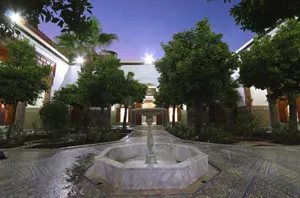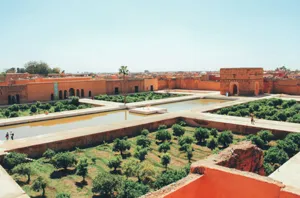This is lovely history to see, a must-visit in Marrakech. In the Bahia Palace, It's easy to imagine what life must have been like two centuries ago. You will witness the luxury of the Moroccan architecture on its brilliant appearances.
The Guide To Visit Bahia Palace (Amazing Facts)
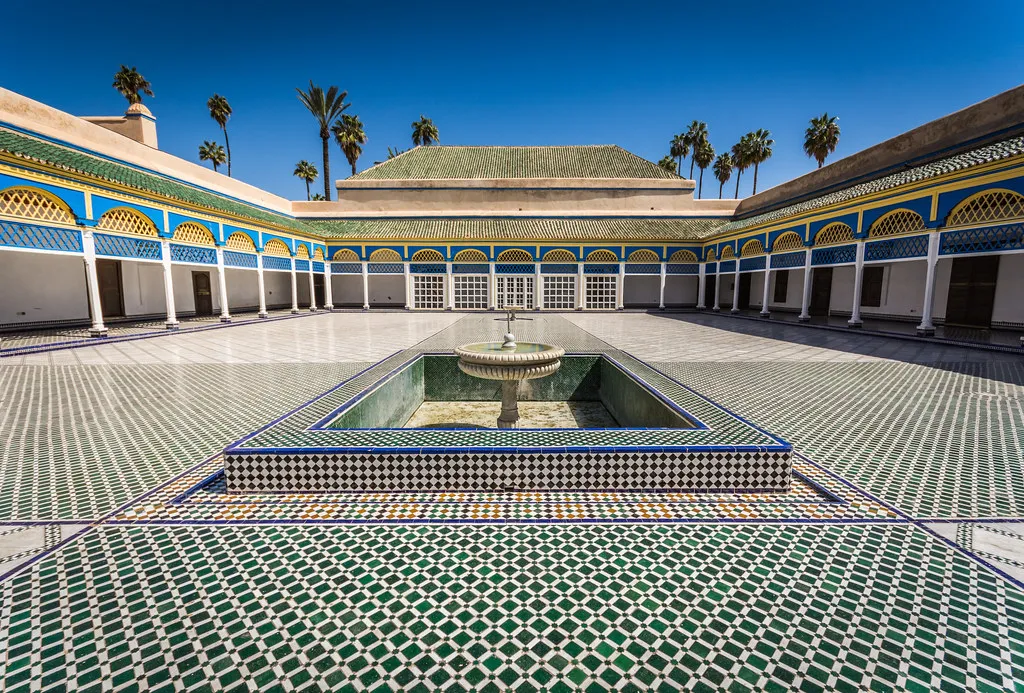
- Last update: May 14 2025
Content
The Amazing History Of The Bahia Palace
The Astonishing Architectural Style Of The Bahia Palace
Bahia Palace Entrance Time and Fee
The Amazing History Of The Bahia Palace
A Former Slave Built An Extravagant Palace
Si Moussa (Mr. Moise is Arabic) was a former slave. He managed to rise through the ranks and became the king chamberlain. And later on, he became the grand vizier.
The powerful and wealthy Grand Vizier built the northern part of this vast palace. This was between 1866 and 1867.
The palace has the form of a big riad. Yet, it was the largest, the most imposing, and the most sumptuous palace of Morocco of its time.
It is near the Jemaa el-Fna square, Agdal gardens, Palais El Badi, and the Royal Palace of Marrakech.
Ahmed ben Moussa (1841-1900) was the son and successor to Si Mussa as Grand Vizir. He reigned over Morocco from 1894 to his disappearance in 1900.
During his reign, Ahmed ben Moussa enlarged the southern part of this official palace.
He lived with his four official wives, his harem of 24 concubines, and their many children.
The palace is named Bāhiya after his favorite wife. Which means, in Arabic, beautiful or brilliant.
The Love Story Of Ahmed Ben Moussa
The name of the palace, it perpetuates the name of the wife of the Minister.
According to the popular stories, Bahia descended from the al-Rahmanah tribe. This tribe is bordering the north of the city of Marrakesh. And Bahia originated from a family known for its knowledge, glory, and power.
Bahia used to move from her father's castle in the Rahamneh area to the family’s riad in Marrakesh.
One day, the great minister saw her while he was still very young, love at first sight. And after a short time he asked to marry her and then she became his life partner.
Her status and knowledge led her to be the lady of his palaces. She was the most loved of his wives, and the ruler of his servants.
To impress his wife, Minister Ahmed bin Musa brought the most skilled artisans from the city of Fez. They worked in the palace for six consecutive years. But in 1890, he died before achieving the construction works of his palace.
Minister Bahammad: A Very Zealous Master
According to some testimonies, Minister Bahammad had 4 wives and 24 concubines. But Bahia was his favorite wife due to her extreme beauty and her vast knowledge.
There are also many stories of the extreme possessiveness and zeal in which the Minister was known. He was castrating the palace guards. This was to kill in them the courage to revolt against him. But also to not approach his wives and concubines.
About 6 thousand servants worked in the Bahia Palace. And except some blind musicians, no one could see his women and his concubines.
After The Death Of The Minister
Musa bin Ahmed, the father of the minister, built the grand Riyadh and the northern square. His son Bahammad completed the construction of the parts of the palace. But works stopped in 1886 following the death of the minister.
After the death of the minister Bahammad, many influential personalities took the palace as a residence.
From 1906 to 1912, the Pasha of Marrakesh's brother built a second floor that he took as his headquarters.
In 1912, the authorities performed a particular configuration to the palace. Heaters, air conditioners, telephone and electricity wires have been installed. This was to suit the new resident, the French Resident-General Marshal Hubert Lyautey.
In the year 1922, the palace was classified as a historical monument. Foreign visitors and tourists come to explore the Moroccan architecture. Especially contemplating the engraving on wood.
The Astonishing Architectural Style Of The Bahia Palace
The Morrocan engineer Muhammed bin Makki Al-Messiwi supervised the construction of the palace. He had received the arts of making wood in Meknes.
The total area of the palace is about 22 thousand square meters. But after the construction of several institutions and facilities, it shrunk. The big garden is separated from the castle. And they changed the original entrance of the palace to a gate near the Al-Mallah neighborhood.
The Little Riad
The Riad has a beautiful garden with four sinks and surrounded by large balconies.
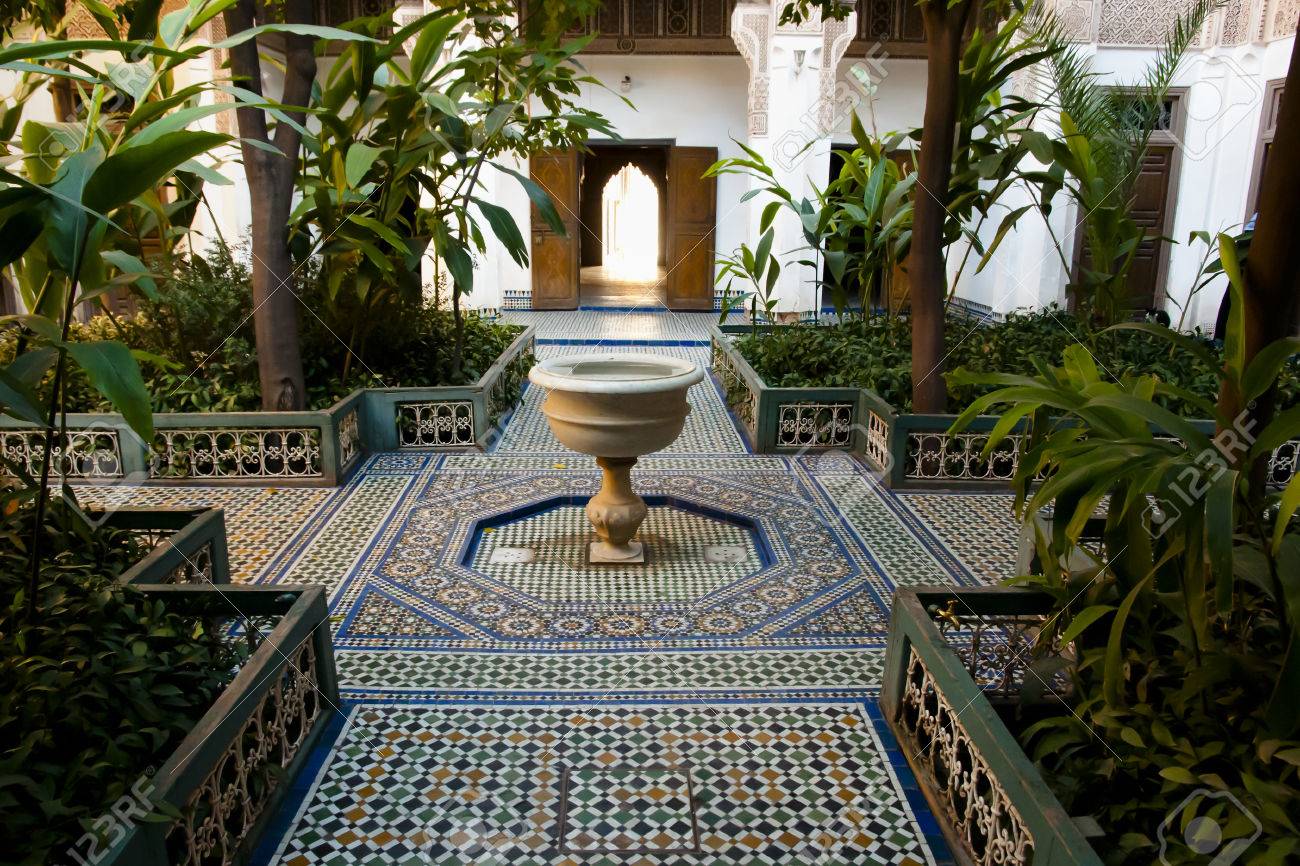
Little Riad
A remarkable ceramic fountain interrupted the Riad paved passageways with Moroccan Zellige.
It also contains alongside pavilions on the western side. Three of them have roofs composed of decorated cedar wood arches.
This design reminds us of the traditional Moroccan architecture style. One can see it, notably in ancient schools in both Fez and Marrakech.
South Gallery
"This blessed Riad ended, with the praise of God and his beautiful help; Ramadan 12, 1315." (Corresponding to the year 1898).
You can read this a historical writing on the gypsum friezes above two of its columns.
These halls have an unreal detailed design. The colorful decorations of the wooden ceilings, the windows and, doors are outstanding.

Gallery Bahia Palace
The large hall was the office of the French Resident (1956-1912). It includes two exquisite foyers and a decorated wooden ceiling. That is perforated by holes to enter daylight. This riad was likely to be the office of Bahammad.
The eastern square
The eastern square or the grand marble square is a spacious courtyard. It is the most magnificent palace courtyard surrounded by corridors with 52 columns of wood.
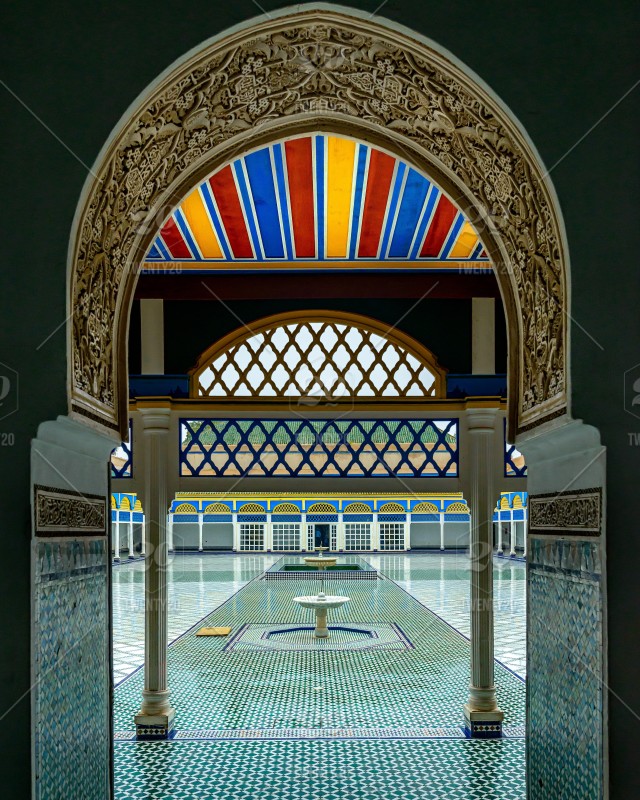
Door to the eastern square
They built the square on the ruins of the gardens and horses stable of the house of Si Musa.
Four galleries having the Italian-style wooden columns surrounded the square.
White and green marble pieces, two marble fountains and, ceramic corridors decorated this courtyard.
Bahia Palace Entrance Time and Fee
The entrance time is:
- Friday: 8 am to 5 pm
- Rest of the week: 9 am to 4:30 pm
The entrance fee is 70 MAD (about 7$).
Related posts
Things To Know Before You Go
- Go early in the morning at 9 am or 10 am to avoid the enormous tourist crowds later in the day.
- Guided tours are available in the palace. Get a guide to tell you about the exciting stories that are not on the small notices on each section.
- If you arrive at the back of the palace, some locals will tell you that it is closed today. They aim to show you other areas nearby. This is obviously not true. Keep following the walls of the palace, and you will find the entrance.
- You may be disappointed that the rooms in the palace are empty. The original furniture is missing. You can't accurately imagine how they lived in this palace.
- There are plenty of photo opportunities here! So bring your camera.
Conclusion
Si Moussa, the grand vizier of Morocco, started the construction of this vast palace in1866.
His son inherited the status of grand vizier and became the most powerful man in Morocco. During his time, he continued the construction and decoration of this architectural masterpiece. He named it after his favorite wife, Bahia.
If you are in Marrakech, you can dedicate less than 2 hours to visit this monument. You will be contemplating the beautiful Islamic architecture of the Bahia Palace.
Definitely, a must-see!
© 2022 Marrakech Tricks. All rights reserved | Design by Marrakech Web Design
